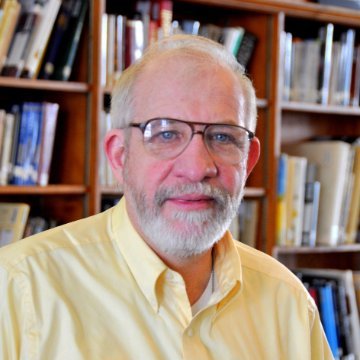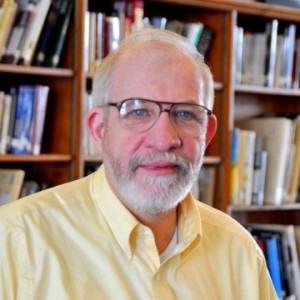by Mike Splaine
In late April, I will join with hundreds of advocates for the Alzheimer’s Association 25th annual public policy forum and make Congressional visits with persons with dementia, family and professional caregivers and others who make up the faces of a broadening movement. I have done this many times but a milestone year — not unlike celebrating a birthday that has a zero at the end — gives pause for thought and I have been thinking a great deal about why the Alzheimer’s disease (AD) movement is not yet as successful as other social movements. This is particularly painful when I think about the broad shared objective of increasing US federal funding for research from its current paltry amount to a level demonstrating that AD and other dementias is a real national priority for investing through our taxpayer supported National Institutes of Health.
I have been re-reading Malcom Gladwell’s “Tipping Point” which attempts to describe how causes and fads reach the mainstream, and he makes a strong case that the context of social movements deeply affects their ability to zoom. I believe that the root of the problem is a social context of ageism, with a hint of stigma, and a side dish of missed opportunity. That said, I cannot ignore that the Alzheimer’s Association and the related broader advocacy community that cares deeply about the issue was born and has had its early life in a time of increased partisanship and dysfunction within Congress and the federal government, and less trust in government driven solutions to social and health issues. This environment has made it difficult for champions to maneuver, build momentum and consensus, and achieve legislation. At times, it has been a big turnoff for motivating grassroots advocates to stay engaged.
The world should celebrate its accomplishments in public health, medicine and welfare that cause this century to face the challenges of success—population aging. There are 450 million baby boomers worldwide. If it feels like we are building the plane and flying it at the same time as we re-make our thinking and institutions around massive numbers of older people, we are. This is an unprecedented society in motion and we are confused.
Ironically, as population aging becomes the issue of the 21st century, ageism remains an ugly reality. It is expressed in sometimes wry humor, expressed in the symbols we choose to imagine old age, expressed in policy debates about “greedy geezers” and through daily acts of passive and active discrimination. Perhaps as there is more successful aging we will find compassion and reason to act on Alzheimer’s—but it does not feel certain that this will be the route our society will take.
Despite messaging for decades that Alzheimer’s is not normal aging, because of stigma we still face an uphill battle to help a friend recognize the evident warning signs in a parent, an in-law or themselves and seek medical attention for issues of cognitive decline. Sadly, even if the first battle to seek help is won, too often we still face general apathy and nihilism from some physicians about the value of knowing an accurate diagnosis. Their bias toward finding diseases and conditions that they can solve invades the medical encounter, as does the underlying ageism—so stigma gets reinforced in an environment in which culturally we expect to find answers and solace.
In my career, I have accumulated thousands of personal and professional grudges against Alzheimer’s disease. Especially difficult is encountering the second generation of persons with AD who I first knew as advocates for their parents and now meet again as advocates for themselves living in the early stages of the disease. Yet one powerful antidote to stigma is the emergence of these voices and faces of persons living with dementia into the public square as advocates and activists, and structures such as the state governments who mandated participation by persons with dementia in state Alzheimer planning processes that support the clarion, moral voice coming through in policy considerations.
In addition to the emerging voice of the person with dementia, I have learned from recent work with persons from different cultures is that we have an opportunity to reduce stigma and improve many lives when we position AD as a family disease, not just a problem for the isolated elder. Ask me about five sisters in Rhode Island, assorted sons-in-law and grandchildren that all rallied around helping a lovely woman named Evelyn have the best life possible with severe dementia, and endless numbers of families doing the same everywhere in the world. We may reduce stigma and get more societal resonance in this Alzheimer’s movement if we keep showing dementia as a family condition.
The community needs to continue to speak with conviction that answers will be found, state the visionary goal and steer our society toward it. I also hope civil servants and more elected officials will follow suit because it has been too rare to hear them speak and act with urgency, force and conviction. In my lifetime, there are and have been many easily recognized medical and public health miracles: penicillin, polio, childhood immunization, safer childbirth, cancer treatment and survivorship, clean water in the developing world, battling HIV and AIDS to a tie. Can we add one more to the list? In my view, more attention to fighting ageism and stigma directly is part of the puzzle of lighting up our society and building a movement that stops Alzheimer’s disease.
Mike Splaine is owner of Splaine Consulting and Cognitive Solutions LLC and serves as a policy and advocacy consultant to the Alzheimer’s Association, Alzheimer’s Disease International, Eli Lilly, and other clients not in the Alzheimer’s space. Previously, he served for many years on the professional staff of the public policy department of the Alzheimer’s Association, developing its grassroots advocacy network and state policy capabilities.
Disclaimer:
The views in guest essays are those of the authors and do not necessarily reflect the views of the LEAD Coalition.


